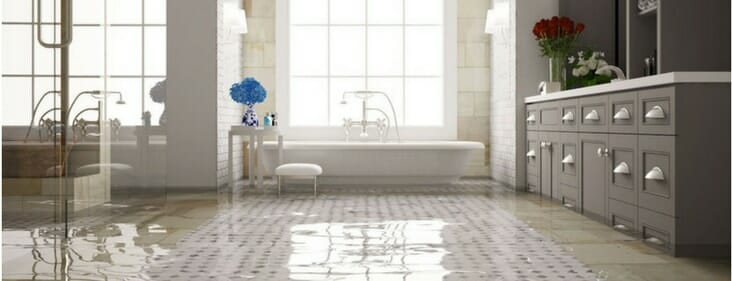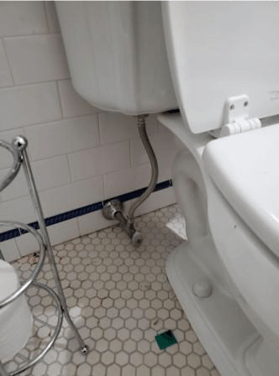Ways to Fix a Water-Damaged Wall in the Bathroom
Ways to Fix a Water-Damaged Wall in the Bathroom
Blog Article
The article author is making a few good pointers on Looking for Signs of Water Damage in the Bathroom as a whole in the content in the next paragraphs.

The bathroom is incredibly at risk for damp buildup and potential water damage as a result of the frequent use water in it. This article uses simple evaluation strategies to help finding water damages risks.
The regular use water in the restroom makes it very vulnerable for moist build-up and also potential water damage. By evaluating it routinely, you can decrease water relevant problems.
The following collection of examinations is easy to execute and ought to be done as soon as in every 3 months in order to keep your restroom healthy and also to prevent potential water damages triggered by the bath tub, the shower, pipeline joints and plumbing, sinks, closets, and the bathroom
Do not neglect carrying out these assessments and also be detailed while performing them. Keep in mind that these easy assessments can save you a lot of money by offering early indicators for water damages
Bath tub and also Shower
The shower and also bath tub call for special attention and maintenance. Check the tiles as well as replace if broken. Make certain that there is no missing out on cement in between the ceramic tiles. Check as well as change fractured caulking at joints where the wall surfaces fulfill the flooring or the bath tub. Obstructed drains pipes as well as pipelines issues will certainly stop the tub from drying as well as may indicate major problems beneath the bathtub. Consult with a specialist quickly to stop architectural damages. Take note of discolorations or soft areas around the bathtub wall surfaces as they might suggest an interior leak.
Plumbing
Signs for water damage are tough to identify given that a lot of pipes are installed inside the wall surfaces.
Pay unique attention to flooring and wall surfaces dampness as well as stains as they may show an undetectable plumbing issue. Check moisture degrees in adjacent rooms as well.
Sinks and also Cabinets
Sinks as well as cupboards are exposed to dampness as well as humidity day-to-day and also are typically overlooked. Evaluate on a regular basis under the sink and on the countertop above it. Repair any kind of drip in the trap as it may recommend drain problems. Browse the sink, sluggish draining pipes might indicate an obstructed drain. Replace sink seals if they are split or loose.
The Commode
The bathroom is a vulnerable water joint. Check the water lines and also search for leakages around the bathroom seat, in the hose, and also under the water tank. If you identify any type of signs of wetness on the floor around the bathroom, check for leakages in the toilet rim and also tank seals.
Know that hanging toilet dish deodorants boosts the chances for blockages.
TIPS TO PREVENT WATER DAMAGE IN THE BATHROOM
The average household uses approximately 80-100 gallons of water per person per day. For a family of 4, that's almost 2,500 gallons of water a week! The largest portion of this consumption comes from bathroom use. Flushing the toilet uses the most water, followed by taking a shower or bath. With that much water running through the home, water damage in the bathroom is bound to happen. Knowing how to spot signs of a water leak is essential to preventing long-term damage. This guide provides you with tips to reduce the impact of water damage on your bathroom.
CAUSES OF BATHROOM WATER DAMAGE
Pipe breaks are the most common cause of water damage we see in our daily jobs. The age of a pipe plays a large role in a pipe break as well as corrosion. Over time, the metal begins to break down, allowing water to escape. Frozen pipe breaks are also a concern in the winter months. Toilet overflows caused by paper products or children flushing inappropriate items. Degraded caulking around the toilet or bathtub can allow water seepage, sometimes behind the fixture, into the subfloor or walls. Condensation forms when the water in a pipe is cooler than the air temperature. Beads of water form on the exterior of the pipes, sometimes so much so that the water begins to drip and pool below. Sink or shower backups created by poor drainage. HOW TO PREVENT WATER DAMAGE IN YOUR BATHROOM
Inspect your toilet supply line for worn or frayed hoses and replace them as needed. Winterize your plumbing to prevent a frozen pipe break. Use vent fans to prevent condensation that can lead to mold growth. Routinely check and replace degraded caulking around your toilet or bathtub. Increase the temperature in your toilet tank and insulate your pipes during the warm summer months to keep condensation from forming. Use child safety locks on the toilets. Flush only toilet paper. "Flushable" wet wipes are actually not good for your plumbing system. Additionally, feminine hygiene products should not be flushed. Prevent water from escaping the tub or shower. Make sure shower curtains are in good condition. Inspect shower doors and replace the seal strip if necessary. Wipe up any water that accumulates on the floor and use bath mats. Water left to sit can cause damage to the tiles and flooring. Refrain from using bath products containing heavy oils to avoid a clogged drain.

As an avid person who reads about Looking for Signs of Water Damage in the Bathroom, I thought sharing that piece of content was essential. In case you liked our post kindly remember to share it. Thank you for taking the time to read it.
Get A Free Quote Report this page